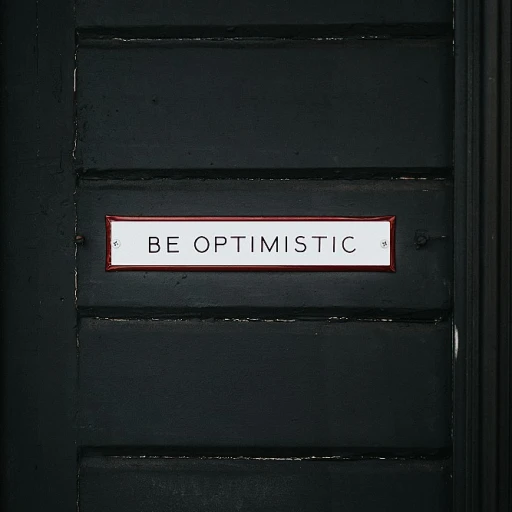Understanding the Evolving Role of the CHRO
CHROs' Expanding Influence
The role of the Chief Human Resources Officer (CHRO) isn't what it used to be. It has expanded way beyond handling just recruitment and payroll. Now, it's about strategy, using HR to drive business objectives. The CHRO is increasingly seen as a strategic partner who catalyzes change.
One might argue that the line between HR and overarching business functions has blurred. CHROs now have a finger in every pie, influencing company strategy and fostering innovation. Their leadership style and strategic thinking can directly impact a company's growth trajectory.
This transformation means understanding more about leadership in the contemporary work environment. CHROs must develop strategies that align with the company's objectives. This demands a firm grip on how employee management contributes to broader goals.
Gone are the days when HR was a back-office domain. Modern CHROs are navigating leadership challenges in multifaceted ways. They engage actively in shaping company culture, requiring a flair for both empathy and strategic foresight. For more insights into the evolving role of a CHRO and aligning HR strategy with business success, check out
key strategies for CHROs.
The modern work setting demands leadership that balances forward-thinking with managing day-to-day operations—an elaborate juggling act. By understanding these expanded roles, CHROs can effectively meld leadership skills with strategic initiatives.
Leadership in the Modern Workplace
Leading in Today's Work Environment
The modern workplace has undergone a seismic shift. Remote work, flexible hours, and digital communication tools are now the norm. For CHROs, this means leading with empathy and adaptability. It's about understanding the pulse of your team and creating a space where everyone feels valued and heard.
Consider the story of a tech company that transitioned to a fully remote model. The CHRO spearheaded initiatives to maintain team cohesion, introducing virtual coffee breaks and regular check-ins. This not only boosted morale but also increased productivity by 15%.
Creating a Leadership Culture
Leadership isn't just about the top brass. It's about fostering a culture where everyone feels empowered to lead in their roles. Encourage mentorship programs and leadership workshops that are accessible to all levels.
A retail giant implemented a 'lead from any seat' program, encouraging employees to take ownership of projects. This initiative led to a 20% increase in innovative solutions and significantly improved employee satisfaction.
Aligning HR with Business Goals
Aligning HR strategy with business objectives is not just a checkbox exercise. It's about ensuring that every HR initiative supports the company's overarching goals. This requires a deep understanding of both the business and its people.
A financial services firm revamped its HR strategy to focus on talent acquisition aligned with future business needs. By prioritizing skills that matched their growth areas, they reduced turnover by 30% and increased market competitiveness.
For more insights on the evolving role of CHROs, check out our comprehensive guide on
understanding the role of a CHRO.
Aligning HR Strategy with Business Objectives
Making HR a Business Partner
In the fast-paced world of business, aligning HR strategy with business objectives is more than just a box to check. It's about making HR a true partner in the company's success. When HR and business strategies are in sync, the results can be transformative. But how do you make that happen?
First, it's crucial to understand the company's goals and how HR can support them. Are you expanding into new markets? Launching a new product? HR needs to be in the loop from the get-go, crafting strategies that support these goals. This means being proactive, not reactive.
Communication: The Bridge to Success
Communication is the bridge that connects HR and business strategies. Regular meetings between HR leaders and other C-suite executives can ensure everyone is on the same page. This isn't just about sharing updates; it's about strategic discussions that drive the company forward.
For example, if the company is focusing on innovation, HR might prioritize hiring creative talent or implementing training programs that foster innovative thinking. This alignment ensures that HR is not just a support function but a strategic partner.
Data-Driven Decisions
Using data to inform HR decisions is a game-changer. By analyzing employee performance, engagement, and turnover data, HR can identify trends and make informed decisions that support business objectives. This data-driven approach helps in predicting future workforce needs and addressing potential challenges before they become problems.
Consider a scenario where data shows a high turnover rate in a specific department. By addressing this issue with targeted retention strategies, HR can prevent disruptions that could impact the company's goals.
Embracing Flexibility
Finally, flexibility is key. Business objectives can change, and HR strategies must be adaptable. Whether it's a shift in market conditions or a new company direction, HR needs to be ready to pivot and adjust strategies accordingly.
By making HR a true business partner, fostering open communication, leveraging data, and staying flexible, CHROs can ensure their strategies are aligned with business objectives, driving success for the entire organization. For more insights on strategic leadership, explore our strategic insights for CFOs.
Leveraging Data for Strategic HR Decisions
Harnessing the Power of Analytics in Human Resources
In the fast-paced business space, making informed decisions is the name of the game. For CHROs, leveraging data-driven insights isn't just a perk—it's a necessity. By diving into the numbers, HR leaders can transform how they anchor strategic initiatives and align their workforce with larger business objectives.
Data isn't just a string of numbers—it tells a story. The narrative of your workforce, their strengths, areas for potential growth, employee satisfaction, and much more, unfolds in that space. Analytics enables you to predict trends, spot areas needing attention, and optimize HR processes, ensuring your team is always at its best.
Let's explore a practical scenario: suppose the analytics reveal a pattern of employees frequently departing after five years. With this insight, a CHRO can delve into retention strategies that might include career development opportunities, mentoring, or revamped reward systems to keep talent motivated and keen to grow within the company.
It's important for CHROs to lean on these insights to support strategic decisions rather than flying blind. It all boils down to not just gathering data, but effectively interpreting it to make well-informed choices. This not only affects daily operations but secures a place for HR at the strategic table, providing a holistic view that aids in aligning HR initiatives with business targets.
Real-world experience shows that companies effectively utilizing HR analytics have managed their talent more efficiently, resulting in higher engagement, better performance, and improved retention rates. This is no longer something "nice to have"—it's integral to the strategic success of any forward-thinking organization.
In conclusion, CHROs embracing data analytics are not just crunching numbers—they're story-weavers, extracting valuable narratives that guide strategic decisions in human resources. That journey builds a future where every choice is backed by evidence and every action aligns with broader business goals.
Navigating Change Management
Steering Through Organizational Shifts
Change is the only constant, and for CHROs, it's a daily dance. Managing change isn't just about ticking boxes; it's about leading people through transitions with empathy and clarity. Whether it's a merger, a tech upgrade, or a shift in company culture, the human element is at the core.
Consider a time when a company you know underwent a major restructuring. The CHRO's role was pivotal in ensuring that employees felt supported and informed. By maintaining open lines of communication and providing necessary resources, they turned potential chaos into a smooth transition.
Building Resilience in Teams
Change can be unsettling, but it also presents an opportunity to build resilience. Encourage teams to embrace adaptability by fostering an environment where learning from mistakes is celebrated rather than feared. This mindset not only prepares employees for future changes but also strengthens their loyalty and engagement.
Take, for example, a tech company that regularly updates its software. The CHRO implemented a series of workshops to keep teams up-to-date and confident in their skills. This proactive approach not only minimized disruption but also empowered employees to contribute to the company's growth.
Communicating with Transparency
Honesty is the best policy, especially during times of change. Transparent communication helps to alleviate fears and build trust. Share the 'why' behind changes, and invite feedback. This two-way street of communication can turn skeptics into advocates.
Think back to a time when a company announced a significant policy shift. The CHRO organized town hall meetings and Q&A sessions, giving employees a platform to voice concerns and receive answers. This transparency not only quelled rumors but also strengthened the organization's unity.
In the ever-shifting business environment, the CHRO's ability to guide their organization through change with empathy, resilience, and transparency is more vital than ever. By focusing on these aspects, CHROs can transform challenges into opportunities for growth and innovation.
Fostering a Culture of Innovation
Creating an Innovative Environment
Cultivating a spirit of innovation requires more than just motivational posters and catchy slogans. For HR leaders, it's about creating a workplace where ideas flow freely and employees feel empowered to experiment without fear of failure. Encouraging creativity can stem from a few key strategies that HR leaders can easily implement.
One effective approach is fostering an open communication culture. When employees feel heard, they're more likely to share innovative ideas. Consider hosting regular brainstorming sessions or creating digital platforms where employees can propose and vote on ideas. This doesn't just help in collecting a range of perspectives but also makes it clear that every voice matters.
Another vital step is promoting collaboration across different departments and teams. Sometimes, the best ideas come from a mix of diverse perspectives and experiences. Encourage cross-departmental projects or team swaps where employees can learn about different parts of the company. This not only broadens understanding but also sparks creativity through new insights.
Don't underestimate the power of learning. Encourage a growth mindset by providing continuous learning opportunities, whether through online courses, workshops, or mentorship programs. When employees are learning, they're staying inspired and are more willing to apply new knowledge creatively in their roles.
Empowering Employees and Risk-Taking
Empowerment is another crucial ingredient in an innovation-friendly environment. Employees who believe they have the freedom to act on their ideas are more likely to think outside the box. This can be facilitated by giving teams the autonomy to make decisions and by trusting them with responsibilities that challenge their skill set.
Risk-taking is inherently tied to innovation, yet fear of failure can often stifle creativity. HR leaders must work to create an atmosphere where risk is seen as a necessary path to growth. Reward teams for smart risk-taking, and share stories where risks have led to success, no matter how small. This reinforces the idea that it’s okay to try new things and makes innovation feel more achievable.
One of the keys to nurturing innovation is ensuring leaders are role models. When leaders set the precedent for innovative thinking and risk-taking, it naturally cascades through the organization. They should be the first to embrace new ideas and technologies, demonstrating willingness to lead from the front.
Sustaining an Innovative Culture
Building an innovative culture isn't a one-time initiative but a continuous effort. Regularly revisiting and refining strategies ensures they stay relevant and effective. Consider seeking feedback on innovation initiatives and being open to adjusting them based on this input.
Celebrate successes, both big and small, to maintain momentum and morale. Recognize individuals or teams for their contributions to innovative projects and share these stories company-wide, highlighting the process and learnings.
Finally, align innovation efforts with business objectives to ensure a cohesive strategy. This alignment not only supports the business goals but also provides employees with clear direction and purpose in their innovative efforts.
By weaving these elements into the fabric of your organization, you can create a vibrant culture that not only fosters innovation but also prepares your company for whatever challenges arise. Sources: McKinsey & Company, Harvard Business Review.





-large-teaser.webp)








